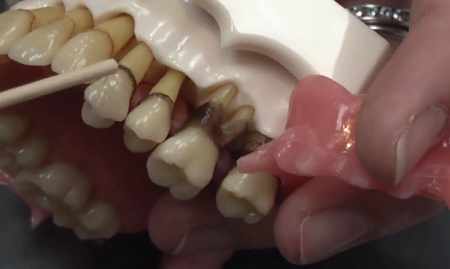Periodontal disease is one of the most complex, yet common maxillofacial pathologies. According to data collected and processed by the World Health Organization, nearly 90% of adults (and 75% of children) have signs of periodontal disease.
Modern dentistry pays great attention not only to the treatment of dental diseases, but also to oral mucous membrane hygiene and the prevention of related diseases.
Let’s take a look at what modern dentistry includes in the concept of “periodontium”. It is the gingiva, periodontium, alveolar bone tissue, tooth root cementum, as well as common nerve endings, blood vessels, which constitute a single whole, united by the common origin and functions.
The fact is that the teeth are not rigidly attached to the jaw – otherwise they would quickly erase due to the enormous loads in the process of chewing food. Between the wall of the hole and the surface of the root of the tooth there is a thin gap. It is filled with connective tissue fibers. These fibers hold the teeth firmly and reliably in place, and this very robust and functional system is being attacked by an insidious disease.
The result can be loose teeth and even tooth loss (an implant can be placed in place of the lost tooth, if the gums are in the right condition).
Periodontal Tissue Diseases Symptoms
Periodontal disease can occur at any age, but is most common in patients of advanced age. When detected in its early stages, periodontal disease is a reversible process, so see your dentist right away if you notice the following symptoms:
- Reddened, swollen, swollen or sensitive gums;
- Bleeding gums when brushing or flossing;
- Teeth looking longer (due to drooping gums);
- Drooping or lagging gums form pockets (pockets);
- The bite of the teeth changes;
- Pus between the teeth and gums;
- Constant bad odor or bad taste in the mouth.
How to Treat Periodontal Disease?
- In the early stages of periodontal disease, gingivitis, the pathological process can be suspended and the healthy condition of the gums can be restored completely, properly caring for the oral cavity. Compliance with the rules of oral hygiene can prevent the accumulation of plaque, which is the main cause of periodontal disease;
- If the plaque has hardened and become tartar, only your dentist or dental hygienist can remove it. He or she will remove plaque and tartar, both above and below the gum line. If you have severe disease, a root cleaning procedure may be required. During this, the irregularities in the roots of the teeth are ground, making it difficult for plaque to accumulate and deposit in these areas.
You can only detect periodontal disease in its early stages if you visit your dentist regularly.






